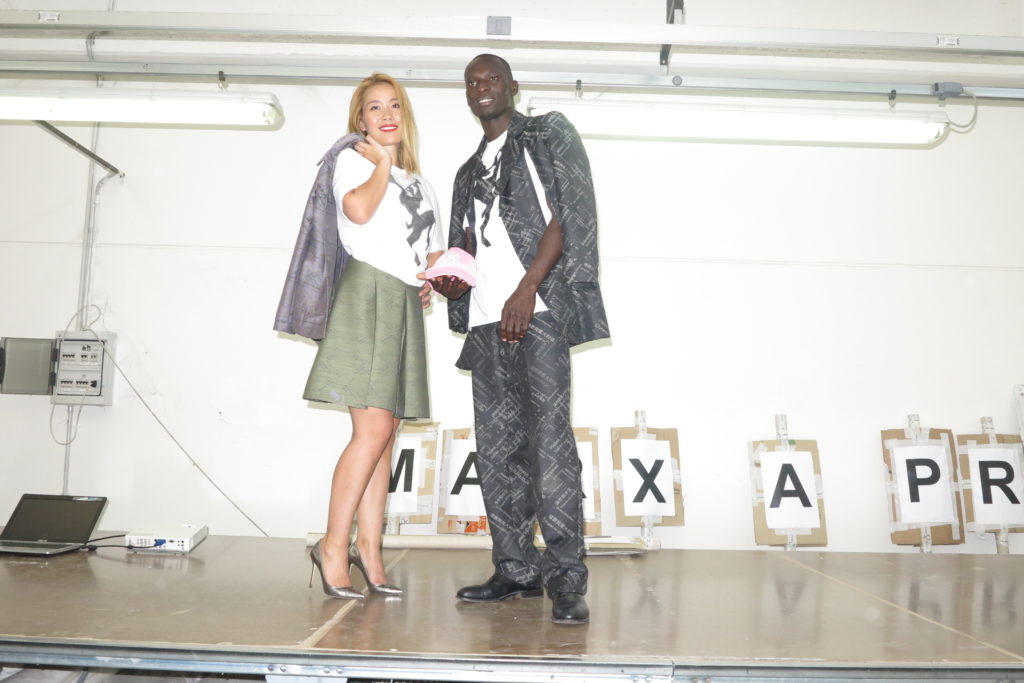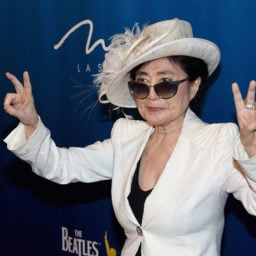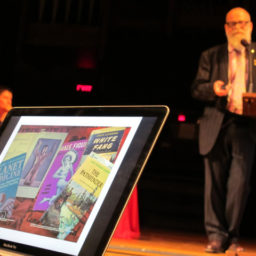The central Italian city of Prato is famous for its luxury textile industry, producing garments for labels like Gucci and Prada. But in recent years it has gained notoriety for a growing conflict between the city’s native Italians and the Chinese migrant workers who largely manufacture the high-end clothes. To help resolve these tensions, particularly in the culturally isolated industrial neighborhood of Macrolotto Zero, also known as Prato’s Chinatown, the city has come up with a creative solution: art.
“The city thinks that social art can be as effective as surveillance cameras,” Simone Mangani, the city’s councilor for culture, told artnet News. Rather than focus on security, “the most important thing to address is the huge cultural divide, the coexistence, and the distrust.”
Prato, which has been known for its textiles since the 12th century, is where the “Made In Italy” label receives its cachet. But the fabric of the industry shifted in the postwar period, amid the mounting pressures of globalization and the influx of Chinese migrants, who, since the 1980s, have transformed the city’s dying luxury textile industry into a hub for fast fashion.
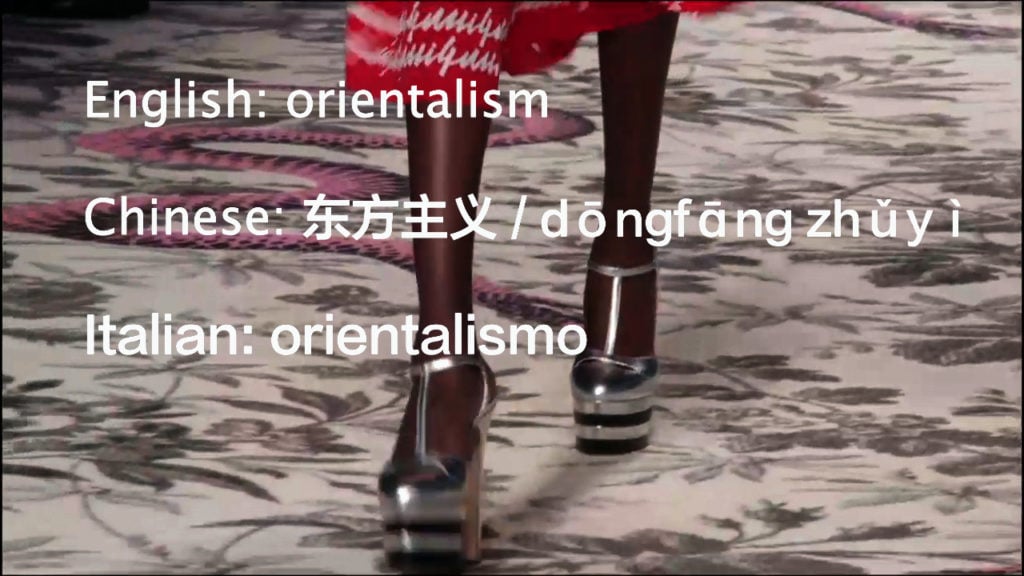
A still from Rainer Ganahl’s video about the Italian-Chinese fashion industry, Snakehead (2018). Courtesy of the artist.
Today, Macrolotto Zero is home to around 4,500 Chinese companies that import cheap materials from China to be assembled and sold across Europe. Many of these businesses operate under the radar, supported by laborers working long hours for little pay in Dickensian conditions (at least seven people died in a factory fire in one such business, Teresa Moda, in 2013). Although some migrants have traveled to Italy legally, many others were smuggled into the country by so-called “snakeheads” and the city has become infamous for its gang activity. (Police consider Prato the home of the Chinese-Italian mafia.)
Tensions between Prato’s Chinese community, which is now the second-largest in Europe, and the city’s native Italian population are rapidly worsening, particularly as Italy’s far-right Lega party gains ground and spreads its anti-immigrant rhetoric. As a result, Prato’s left-centrist government, with funding from the Tuscany Region, has made Macrolotto Zero the focus of an €8 million ($9.3 million) redevelopment project aimed at making the area “more livable, more attractive, [and] more socially and economically lively,” according to a mission statement on the city’s website.
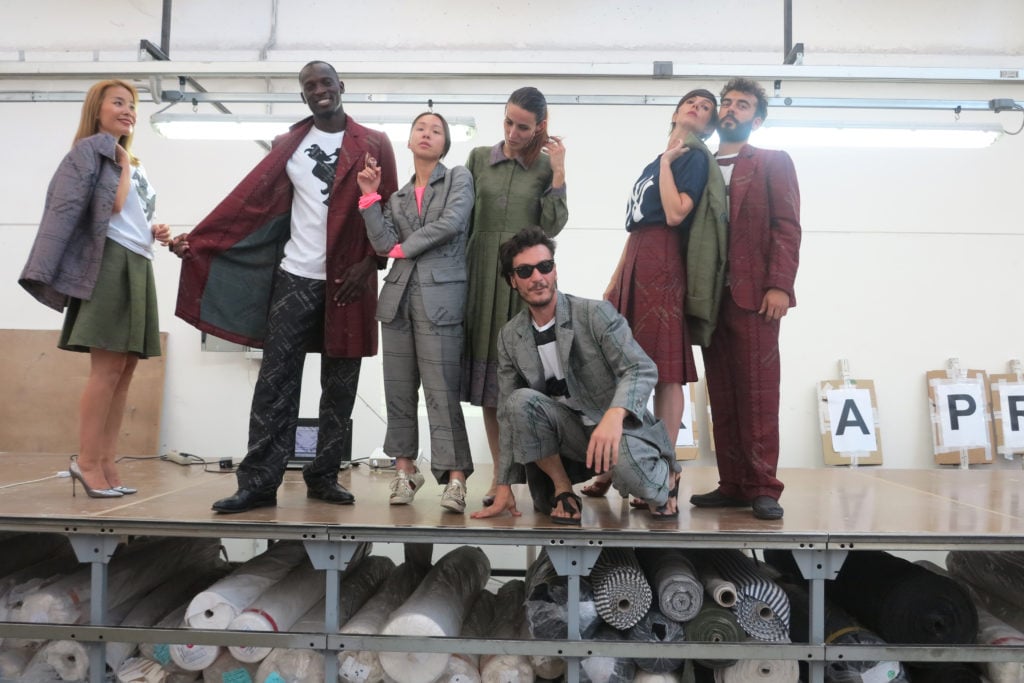
Models in Rainer Ganahl’s fashion show Please, Teach Me Chinese, Please, Teach Me Italian. Marx a Prato, Gucci a Prato, which will be staged on June 22 in Prato.
Between 2019 and 2022 the city hopes to build infrastructure for public services and spaces that will facilitate socialization. In the meantime, it is hoping that art can help bring the community together. As part of that plan, the city’s Luigi Pecci Center for Contemporary Art, which turns 30 this year, has invited artists to engage with the sociocultural issues specific to Prato. The artist Rainer Ganahl, who was born in Austria near the Italian border and now lives in New York, is addressing some of the neighborhood’s problems with an ambitious project that involves a fashion show tomorrow, June 22, which will later be made into a film.
Since the 1990s, Ganahl’s artistic practice has involved learning languages—so far he’s mastered nine and is currently studying Chinese. He’s also previously designed artistic fashion lines, including “Comme des Marxists,” which debuted in New York at White Columns in 2013. Fittingly for Prato, Ganahl plans to unveil a new clothing line that has a logo with poetic invitations to “Please, teach me Chinese” and “Please, teach me Italian” in several different languages.
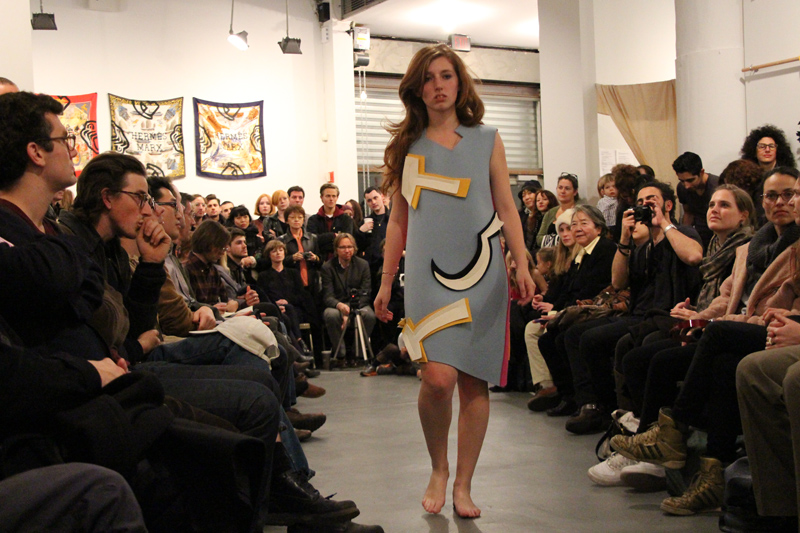
Rainer Ganahl’s “Comme des Marxists” at White Columns, 2013. Courtesy of the artist.
To produce the clothes, Ganahl worked with the local Marini Industrie SpA group, which manufactures for luxury brands including Gucci. He also retrofitted his logo onto clothes purchased directly off the backs of migrant workers in the neighborhood. He named the project Please, Teach Me Chinese, Please, Teach Me Italian. Marx a Prato, Gucci a Prato.
The performance will take place along a stretch of active factories connected to the so-called “Piazza dell’Immaginario” (Imaginary Square), an old supermarket parking lot that has been reclaimed by the local photography company Dryphoto Arte Contemporanea in response to the dearth of public space in the area.
The event is part of a wider street festival that 1,500 people are expected to attend—in itself a significant feat for a neighborhood that has historically been ignored by city initiatives. “My performance is now just a part of the event, which is already an accomplishment,” Ganahl told artnet News. “So far the only people who really knew [the Chinese community] were the tax collectors and the police, basically.”
Ganahl will collaborate with the local dance collective Kinkaleri as well as Chinese performers, and has encouraged the participation of local Chinese groups to sell traditional clothing and play Chinese music at the event. He hopes that spectators communicate with one another and are encouraged to share phrases in their native languages.
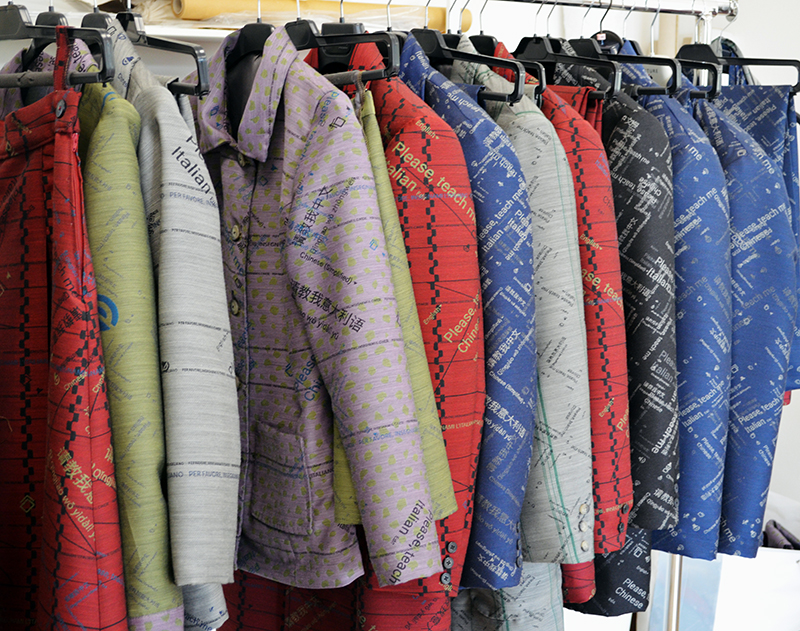
Rainer Ganahl’s designs for Please, Teach Me Chinese, Please, Teach Me Italian. Marx a Prato, Gucci a Prato. Courtesy of the artist.
Ganahl, who has shown several times in the Venice Biennale, is not the only high-profile artist getting involved. Earlier this month Yoko Ono installed billboards marked with the word “DREAM,” and her signature, throughout the Macrolotto Zero neighborhood, with the hope of prompting residents to imagine their desires and, ideally, realize them. The project is part of Ono’s larger “In a word” series, which she launched after winning the Golden Lion at the Venice Biennale in 2009. The billboards will remain in place until December.
The wider effects of Prato’s ambitious art initiative have yet to be seen, but officials say that the engagement with the Chinese community has already been a meaningful step.
“It was not so easy to get in touch with the property of the houses that are hosting Yoko Ono’s Dream project; it was not so easy to get in touch with Chinese companies,” culture councillor Mangani told rtnet News, adding that the city encountered similar hurdles in engaging the area’s Italian population. That said, Mangani says the city would readily try a similar project in the future. In fact, its already made the city’s Soccorso neighborhood, another cultural melting pot, its next target.
